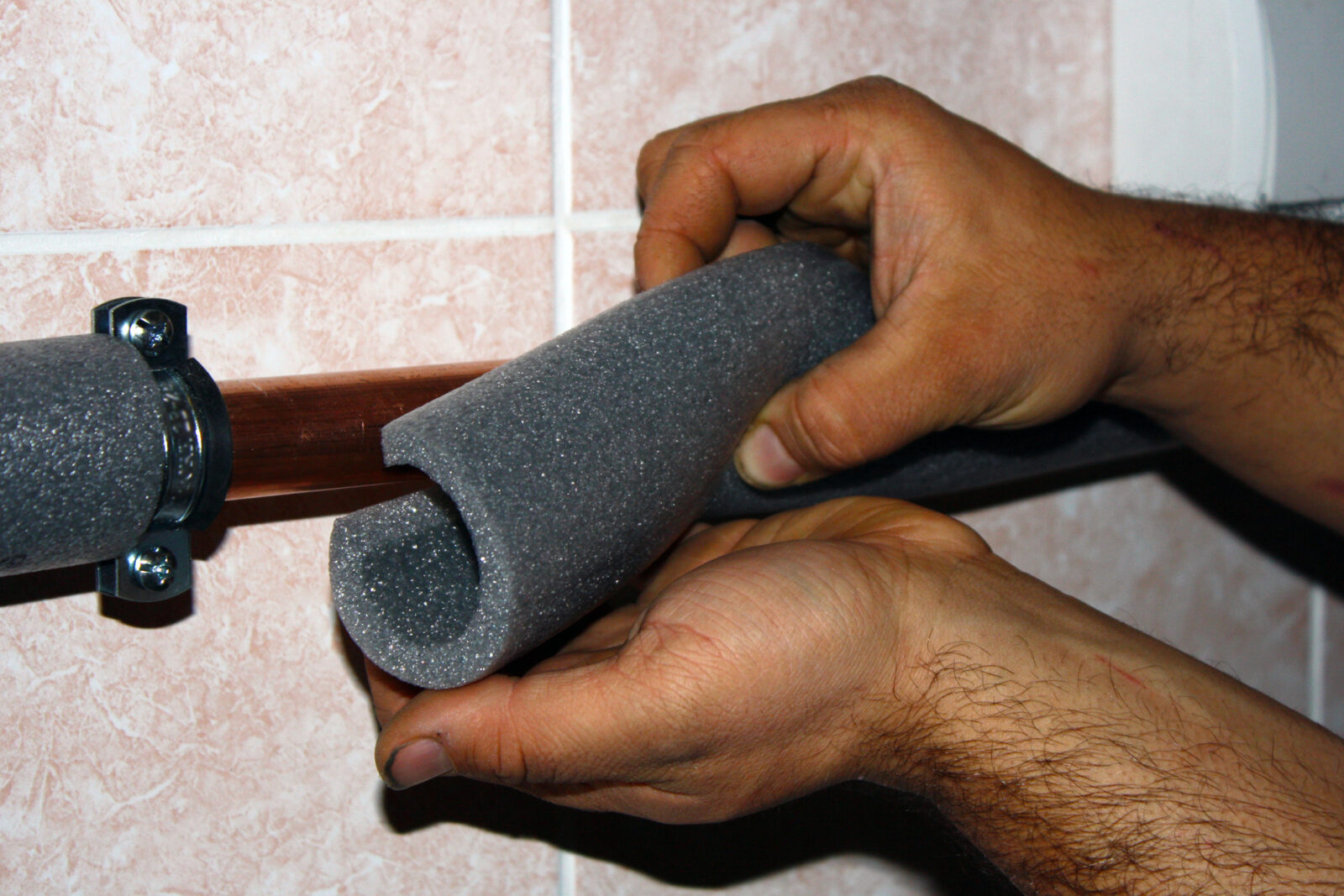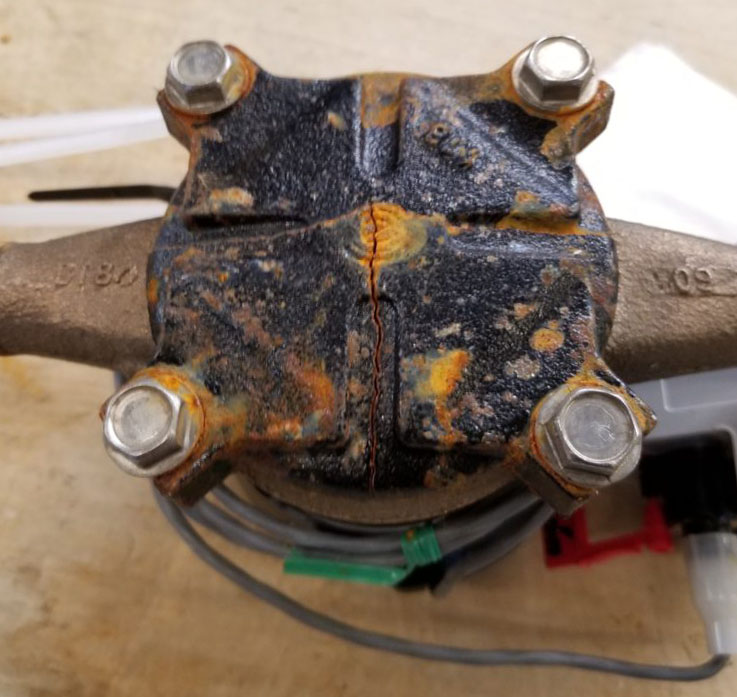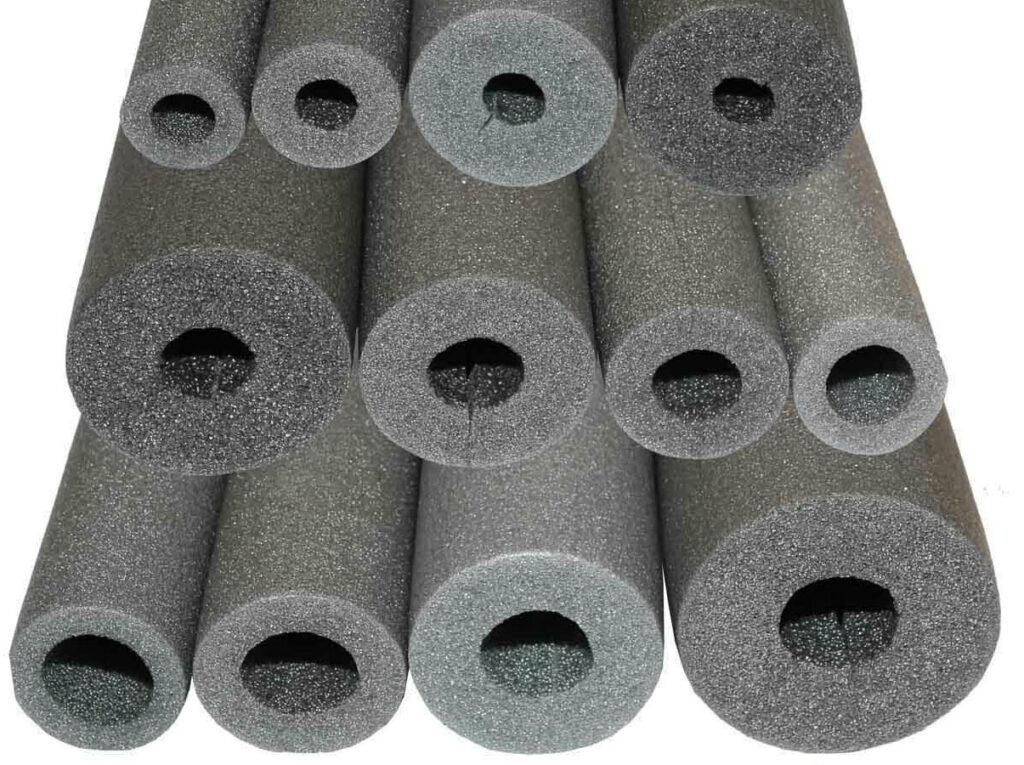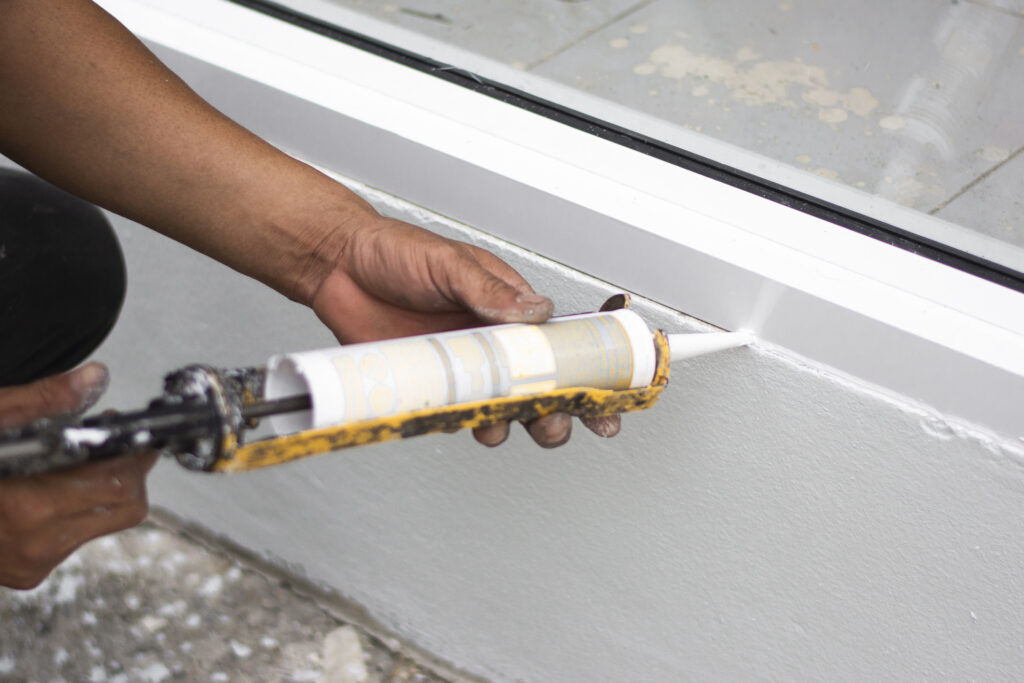Temperatures Are Dropping — Protect That Water Meter!
 November 30, 2022
November 30, 2022
After a mindbogglingly warm start to fall (it was in the mid-70s just a few weeks ago!), we’re now seeing regular drops into freezing temperatures. Which means it’s high time to insulate your water meter, protect against frozen pipes, and get the house ready for winter before temperatures drop any lower.
Most water meters and many pipes are located in unheated areas such as basements and crawl spaces, where low temperatures can easily cause them to freeze, leak or burst. But remember that while Lehigh County Authority owns the meter, the water customer is responsible for protecting it.
If the water meter is broken because of freezing or other damage, LCA will charge the customer for the meter’s replacement.
If you look closely at the water meter in the picture, you can see a crack in the frost-plate on the bottom. The unprotected meter was located in a drafty, unheated basement and the frost plate expanded and split when the water inside the meter froze. There is no denying this meter was frozen! The customer was charged for a new one.
Luckily, there’s a simple way to avoid this problem: by insulating your water meter with a specially made cover. If you’re not sure what kind to purchase, check with a plumbing supplier or contact us. Trust us, it’s worth the effort.
Frozen Pipes Are No Fun

Thankfully, water pipes aren’t hard to protect, either. They can either be insulated or wrapped in heat tape. Gray or black foam pipe-wrap insulation, like the type shown in the picture, and heat tape are available at most hardware and big box stores. If you’re unsure how to install either, contact a licensed plumber. You can also watch a video from This Old House to get pointers.
It’s also time to ensure that water to any outside sources (such as a garden-hose hookup) has been turned off. There’s usually a shutoff valve inside the house somewhere. Once that valve has been closed, turn the outside faucet on and drain it to avoid frozen pipes.
Then either add an insulating foam cover, or leave it open a turn or two to ensure that if any water is still trapped inside, it will push out the opening when it freezes — not expand and cause the pipe to crack or burst.
If Your Water Meter Freezes…
- Thaw it using a hairdryer or small heater, but never open flame!
- Contact LCA as soon as possible to replace the damaged meter.
- We cannot work on frozen pipes or a frozen meter – they must be thawed first!
- If the meter is leaking, turn off the main water source until help arrives!
- Plumbers and plumbing companies are not authorized to repair or replace LCA water meters!
- If any frozen pipes rupture, find the shut-off valve and turn off the water. This is often located on the main service line. You may also have separate shut-off valves for outside pipes or other areas in the house.
Button up the House
This is also a good time to seal up your house to prevent drafts and cold air from finding their way inside (and to prevent heat from escaping). Not only will this help to protect the plumbing, but it will also save you some money on heating costs. Expanding, spray-foam insulation is a fairly inexpensive way to do this, and can be used to close up areas where wires or pipes enter the house through a wall or foundation. It can also be used to seal up larger gaps around windows and door trim.
Insulate those outlets, too: You can purchase inexpensive outlet and switch insulators at most hardware and big-box stores. They’re usually made of foam, and are placed under the outlet cover to block cold air from outside walls.

And while you’re at it, check the caulking around windows and doors: If it’s peeling or cracked, remove the old caulk carefully and replace it with a newer, silicone-based formula that will last for many years.
If your windows are drafty, invest in some plastic window wrap. This will keep cold winter air out, and warm air in.
Gaps under doors often leave the uninvited cold air in, so install a door sweep — there are a number of types that have an adhesive backing, so no drilling is required.
If you can’t do that, at least invest in (or make) a doorstop, which will block the cold air.
If your electric water heater isn’t insulated, now’s a good time to do that as well. You can purchase kits at hardware and big-box stores. Leave gas- and oil-powered water heaters to the pros — mistakes with these could cause a fire or cause venting of deadly carbon monoxide into your home.
Tips for Renters
If you’re renting, check with your landlord to see who’s responsible for winterizing your residence. If you (or the landlord) can’t make all these changes, there are still a number of affordable options to let Old Man Winter know he’s not invited inside:
- Run Ceiling Fans In Reverse: Warm air rises. Running the fan so the blades turn clockwise pushes warm air coming out of your heater downward. Set the fan to its lowest level to get this effect; running it on high will cause the air to cool and create a breeze.
- Cover Walls, Floors, Ceilings: This keeps the heat inside your house, and is a simple fix for poorly insulated homes. Quilts hung on exterior-facing walls work the same way they do on your bed —they keep heat inside. Carpets keep your feet warm.
- Switch the window coverings: Use thick panel drapes or cellular or honeycomb blinds to add another layer of insulation around windows — especially helpful at night.
- Be a passive heater: Passive solar heating puts the sun to work for you. Observe how sunlight moves across your home during the day, and leave curtains or blinds open on windows that get a lot of sun exposure. South-facing windows usually provide the most sun.
- Clean radiators and vents; replace furnace air filters: Radiators, hot air vents and baseboard heaters collect dust that slows (or blocks) air flow and acts as an insulator, preventing some of the heat from reaching the room and lowering efficiency. A dirty air filter makes your furnace work harder, costing you more money and creating additional wear and tear on the unit.
If you have any questions or service issues this winter, don’t hesitate to contact us.